16 U.S. Cities Where Public Art Turns Every Walk Into a Treasure Hunt
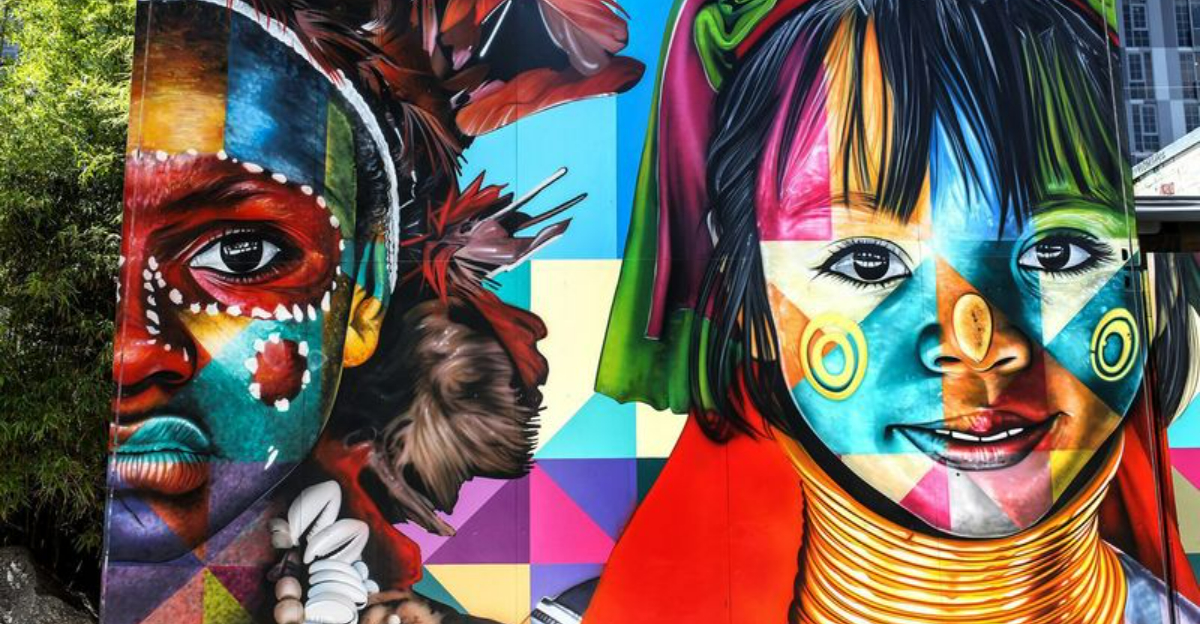
Strolling through American cities can be like wandering through open-air museums, with amazing artwork around every corner. From colorful murals spanning entire buildings to quirky sculptures tucked in unexpected places, public art makes city exploration exciting and fun.
I’ve discovered these 16 cities where you’ll find incredible free art that tells stories, sparks conversations, and makes ordinary walks extraordinary.
1. Philadelphia’s Mural Magic
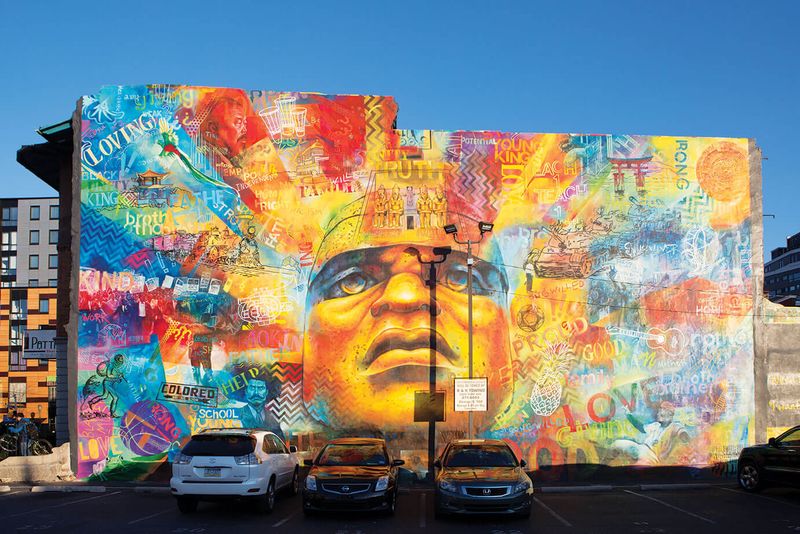
Philly boasts over 4,000 murals that transform ordinary walls into stunning canvases. The city’s Mural Arts Program, started in 1984 to combat graffiti, has grown into the largest public art initiative in America.
Walking through neighborhoods like Fishtown or South Philly, I’m constantly surprised by massive paintings depicting historical figures, community stories, and abstract designs. My favorite is the “Garden of Delight” in the Italian Market area, where flowers seem to burst from the bricks.
Kids love the scavenger hunt feel of finding new murals, and many pieces include QR codes that tell you about the artists and inspiration behind them. The city even offers guided tours if you want the full story behind these amazing outdoor masterpieces.
2. Chicago’s Bean and Beyond
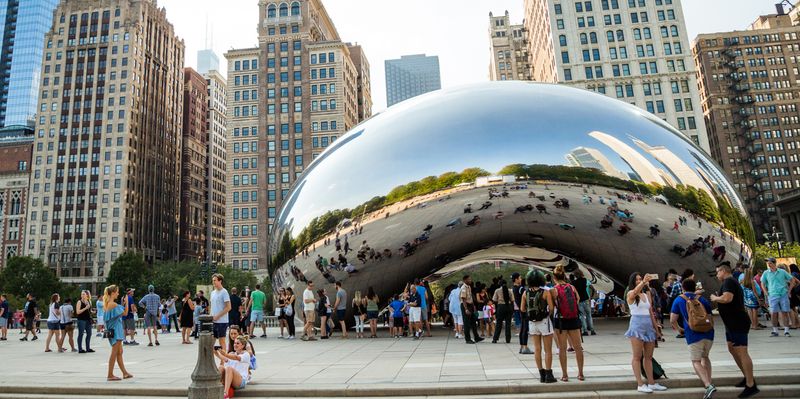
Cloud Gate (nicknamed “The Bean”) might be Chicago’s most famous artwork, but the city’s public art scene goes much deeper. Millennium Park alone hosts rotating installations alongside permanent pieces like Crown Fountain, where digital faces spit water on giggling kids during summer.
Walking downtown, you’ll spot works by Picasso, Calder, and Miró right on the streets. The city’s policy requiring buildings to include public art has created an amazing collection of sculptures, mosaics, and installations.
Chicago has over 500 public artworks in its collection! My tip: download the Chicago Public Art map app before your visit. It shows you where to find hidden gems like the colorful Flamingo sculpture in Federal Plaza or the wild street art in Pilsen neighborhood.
3. Seattle’s Fremont Troll

Under an ordinary bridge lurks an extraordinary sight – a massive troll crushing a real Volkswagen Beetle in his hand! This 18-foot concrete creature is just one example of Seattle’s wonderfully weird public art scene.
The Fremont neighborhood calls itself the “Center of the Universe” and backs up that claim with art around every corner. You’ll find a statue of people waiting for a bus, a rocket, and even a 16-foot bronze Vladimir Lenin statue with a quirky history.
Seattle requires 1% of capital improvement project funds go toward public art, resulting in over 400 permanent works citywide. Olympic Sculpture Park offers free access to world-class pieces with stunning Puget Sound views. When I visited with my nephew, he spent hours climbing on the giant red “Eagle” sculpture while I enjoyed both the art and the mountain backdrop.
4. New York’s High Line Showcase
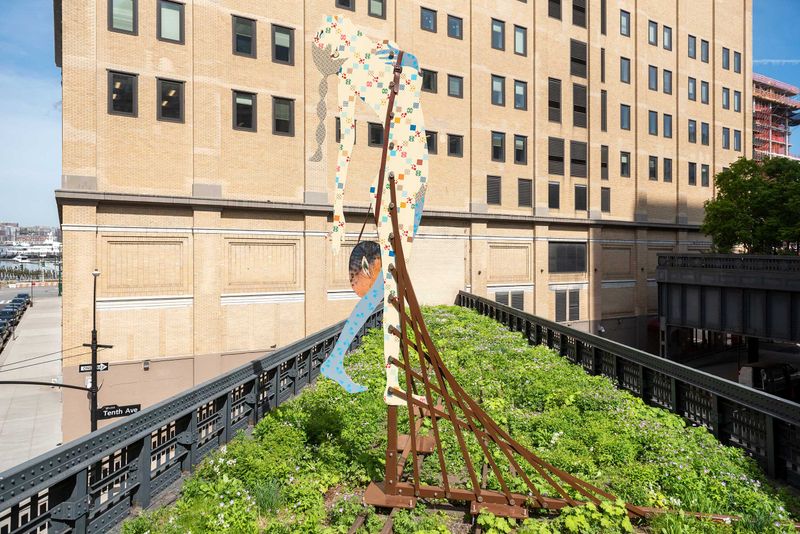
Walking the High Line feels like strolling through an art gallery without walls. This elevated park built on old railway tracks features rotating installations that change with the seasons, giving me a new experience every visit.
What makes the High Line special is how art blends with plants and city views. One moment you’re admiring a colorful sculpture, the next you’re watching street performers through windows in the walkway. The surrounding neighborhood is packed with over 300 galleries if you want more art after your walk.
My favorite spot is at 10th Avenue, where an amphitheater-like overlook turns busy street traffic into a living art show. Don’t miss exploring the nearby Hudson Yards with its massive honeycomb-shaped “Vessel” sculpture and the ever-changing digital installations at Artechouse for a full day of art adventures.
5. Detroit’s Eastern Market Murals

If you love food and art, Detroit’s Eastern Market neighborhood will make your day perfect. This historic farmers market district has transformed into one of America’s most amazing street art destinations, with over 100 massive murals covering market buildings.
Each September, the Murals in the Market festival brings artists from around the world to add new works. I watched an artist on a lift painting a five-story building – it was like seeing magic happen! The contrast of fresh produce vendors below colorful walls creates a unique atmosphere you won’t find anywhere else.
Beyond the market, Detroit’s public art scene is booming with projects like the Belt Alley, where a former garage became an art-filled pedestrian walkway. The city’s recovery story is painted across its buildings, turning once-empty spaces into open-air galleries that celebrate Detroit’s comeback.
6. San Francisco’s Mission District Alleys
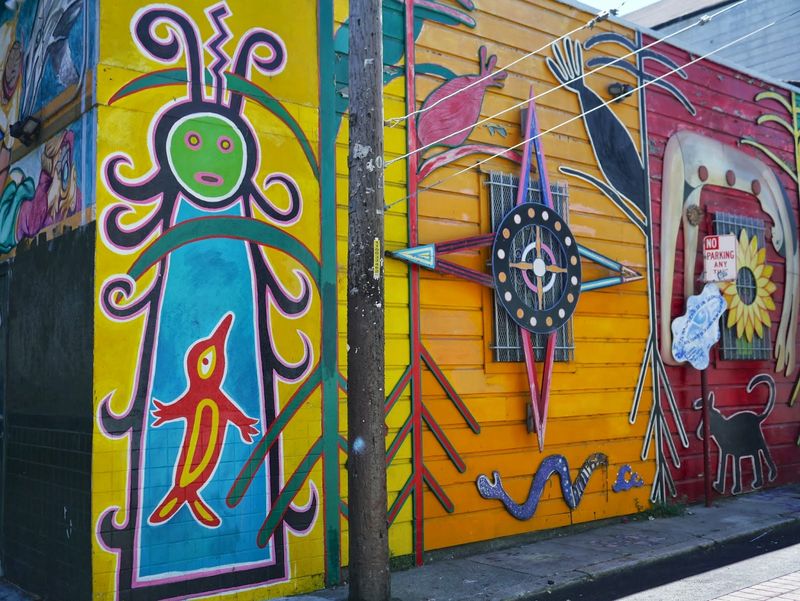
Hidden between the main streets of San Francisco’s Mission District, narrow alleys hold some of America’s most meaningful public art. Balmy Alley and Clarion Alley feature murals addressing immigration, housing rights, and cultural heritage – turning walks into powerful history lessons.
What started in the 1970s as expressions of Latino culture has evolved into a living museum where artists continually add new perspectives. The colors are so bright they seem to glow, even on foggy San Francisco days!
After exploring the alleys, I recommend checking out the Women’s Building MaestraPeace Mural – a massive work covering an entire building with images of women from around the world.
San Francisco also offers plenty of lighthearted art, like the famous 16th Avenue Tiled Steps, where a community transformed an ordinary staircase into a sparkling sea-to-stars mosaic that kids love climbing.
7. Miami’s Wynwood Walls
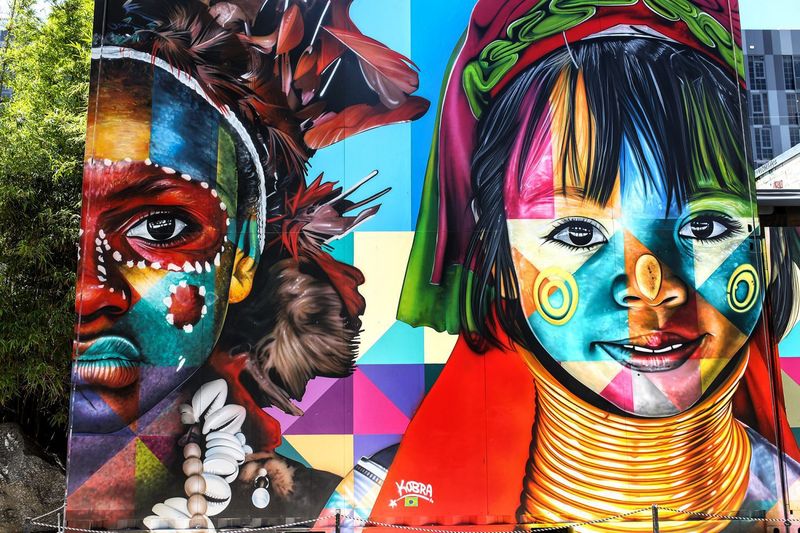
Once a forgotten warehouse district, Wynwood has become Miami’s coolest neighborhood thanks to walls covered in stunning artwork. The Wynwood Walls outdoor museum started in 2009 when developer Tony Goldman invited top street artists to transform the area.
Today, over 50 blocks feature colorful murals that change regularly. I love watching visitors’ faces light up when they turn a corner and discover a new masterpiece! The best part? Unlike most museums, this art park is free and open to everyone.
Visit during the monthly Art Walk when galleries stay open late and food trucks line the streets. For the full experience, take a guided tour – local artists often share stories you won’t find online.
My favorite discovery was a hidden courtyard where every surface, even trash cans and benches, had been turned into art. Wynwood proves that sometimes the best art museums have no roofs at all.
8. Austin’s Roadside Giants

Austin’s motto is “Keep Austin Weird,” and its public art certainly delivers on that promise! Giant guitar sculptures, a massive crowning a building, and the famous “Hi, How Are You” frog mural painted by musician Daniel Johnston make walks through this Texas city anything but boring.
Castle Hill’s HOPE Outdoor Gallery was once America’s largest outdoor graffiti park. Though it moved locations, Austin still offers plenty of spaces where street artists legally create ever-changing murals.
When I visited with friends, we spent hours hunting down the city’s quirkiest installations. The 40-foot-tall Jeremiah the Innocent frog mural became our favorite meeting spot.
Don’t miss South Congress Avenue’s colorful “Greetings from Austin” postcard mural – it’s the perfect photo spot to prove you experienced the city’s artistic side. Austin’s art reflects its music scene: creative, a little rebellious, and totally authentic.
9. Minneapolis Sculpture Garden
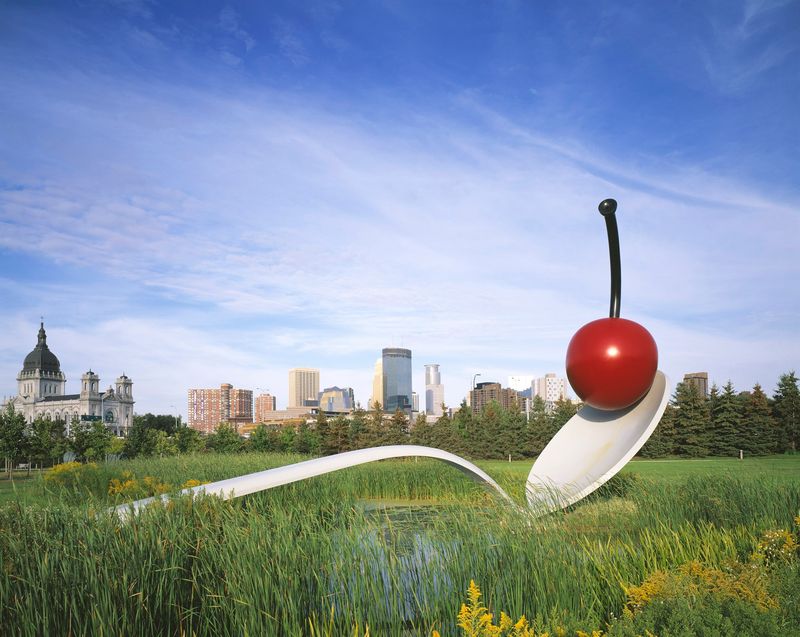
Where else can you find a giant cherry balanced on an equally giant spoon? Minneapolis’s Walker Art Center Sculpture Garden hosts over 40 permanent installations across 11 acres of parkland, including the famous “Spoonbridge and Cherry” that’s become the city’s unofficial symbol.
I visited during winter when snow covered the garden, creating a magical effect as artwork emerged from the white landscape. Unlike most sculpture parks that close seasonally, this one stays open year-round, offering completely different experiences with each visit.
Kids particularly love the garden’s interactive pieces, like the artist-designed mini-golf course during summer months. The city extends its art commitment beyond the garden too – look for creative bus shelters, painted electrical boxes, and poetry stamped into sidewalks as you explore downtown.
Minneapolis proves that even in the coldest climates, public art creates warm community spaces.
10. Portland’s Peculiar Installations

Portland embraces its reputation for quirkiness through public art that makes me smile. The city is home to tiny bronze sculptures hidden throughout downtown – including a 2-inch snail you need a keen eye to spot! These “Mill Ends Park” installations are part of the world’s smallest official park.
Street corners feature painted pianos anyone can play, while former power poles have been transformed into totem-like art pieces. The Alberta Arts District showcases community-created sculptures made from recycled materials, reflecting Portland’s environmental values.
My favorite discovery was the “Portland Loo” – even public toilets here are artistic! These specially designed facilities feature artwork on their exteriors.
Don’t miss the famous “Keep Portland Weird” mural for the perfect photo op. This city proves art doesn’t need to be serious to be meaningful – sometimes the most playful pieces create the strongest community connections.
11. St. Louis’s City Museum

Is it a museum? A playground? An art installation? St. Louis’s City Museum defies categories as it spills from its building onto surrounding streets. Created largely from reclaimed industrial objects, this massive public art complex invites everyone to climb, slide, and explore.
Outside, a school bus dangles from the roof, while inside, caves and tunnels lead to unexpected treasures. Though technically a ticketed attraction, many exterior elements are visible to passersby, creating a neighborhood that feels like walking through an artist’s imagination.
The surrounding streets feature sculptures made from salvaged materials that match the museum’s aesthetic.
When I visited with my niece, she spent hours climbing the outdoor “MonstroCity” playground sculpture while I appreciated how the facility turns industrial history into playful art. St. Louis shows that public art works best when people can truly interact with it – touching, climbing, and becoming part of the installation themselves.
12. Baltimore’s Artscape Festival Legacy
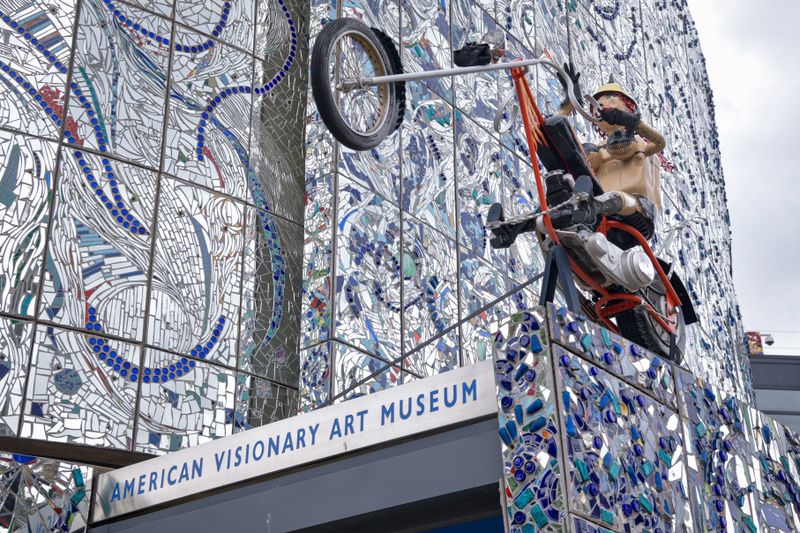
America’s largest free arts festival happens yearly in Baltimore, but its impact lasts all year through permanent installations left behind. Artscape transforms the city’s Station North Arts District with sculptures, murals, and interactive pieces that stay long after the festival ends.
Walking through Baltimore, I discovered giant book sculptures outside the central library, mosaics covering entire blocks, and light installations that transform at night. The city’s vacant lot art program turns empty spaces into community galleries, with rotating exhibits that give emerging artists public platforms.
Baltimore’s art scene feels authentically grassroots rather than corporate-sponsored, with community involvement at its core. This city proves that art festivals can create lasting neighborhood transformations beyond their weekend celebrations.
13. Asheville’s River Arts District
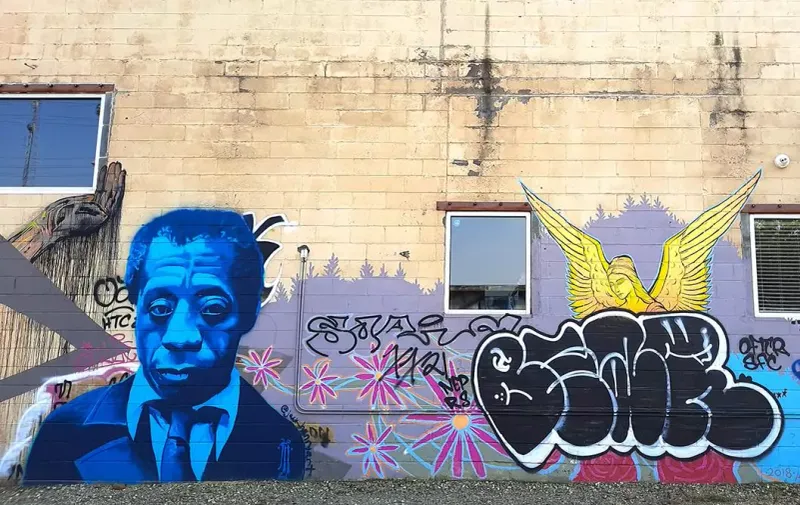
Nestled in the Blue Ridge Mountains, Asheville has transformed former industrial buildings along the French Broad River into one of America’s most walkable art districts. More than 200 artists work in converted warehouses, with their creativity spilling onto exterior walls as colorful murals.
The Foundation Walls area features ever-changing graffiti art that artists continuously update. Unlike many cities where street art appears overnight, here you can often watch artists at work, adding new pieces to the outdoor gallery.
My favorite discovery was the riverside sculpture trail connecting studios, where metal sculptures created from industrial scraps honor the area’s manufacturing history.
Asheville’s public art reflects its unique mountain culture – look for folk art influences, nature themes, and quirky Appalachian humor throughout the installations. This smaller city proves you don’t need a massive population to create an incredible public art scene.
14. Denver’s Blue Bear Phenomenon
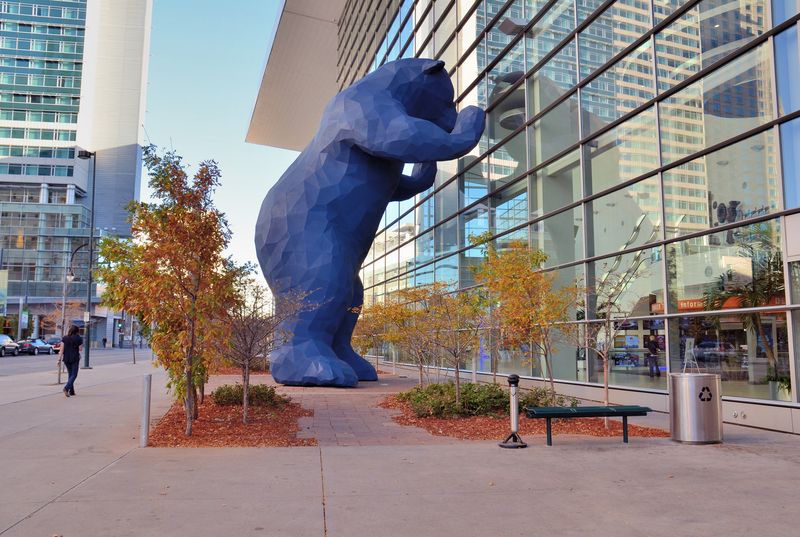
A 40-foot blue bear peeks into Denver’s convention center, creating one of the city’s most photographed spots. This playful sculpture, officially called “I See What You Mean,” represents just one piece of Denver’s extensive public art collection funded by a program requiring 1% of new construction budgets go toward art.
Walking through downtown, I discovered giant blue dancing figures outside the performing arts complex, painted electrical boxes on nearly every corner, and abstract sculptures filling parks. The RiNo (River North) district hosts an annual mural festival that adds dozens of new works each summer.
Denver International Airport deserves special mention – controversial murals and a famous demon horse sculpture with glowing red eyes make it America’s most artistic airport!
My tip: download the Denver Public Art app before visiting. It creates customized walking tours based on your interests and time available, ensuring you don’t miss the city’s most interesting installations.
15. Kansas City’s Spray Seeker Paradise

Kansas City might surprise you with its incredible collection of over 200 fountains – more than any city except Rome! These aren’t just plain water features but artistic masterpieces ranging from classical sculptures to modern installations.
Beyond fountains, KC’s crossroads district has transformed into an outdoor gallery with building-sized murals covering former industrial spaces. The annual SpraySeeker festival brings artists from around the world to add new works each year.
If you’re traveling with kids, don’t miss the Penguin Park with giant concrete animal sculptures they can climb on, or the kaleidoscope at Crown Center that turns viewers into living art displays.
I loved discovering the city’s “Art in the Loop” program that places temporary installations at transit stops, turning everyday commutes into cultural experiences. Kansas City proves that mid-sized cities can compete with coastal art hubs when communities commit to creative public spaces.
16. New Orleans’ Musical Streets
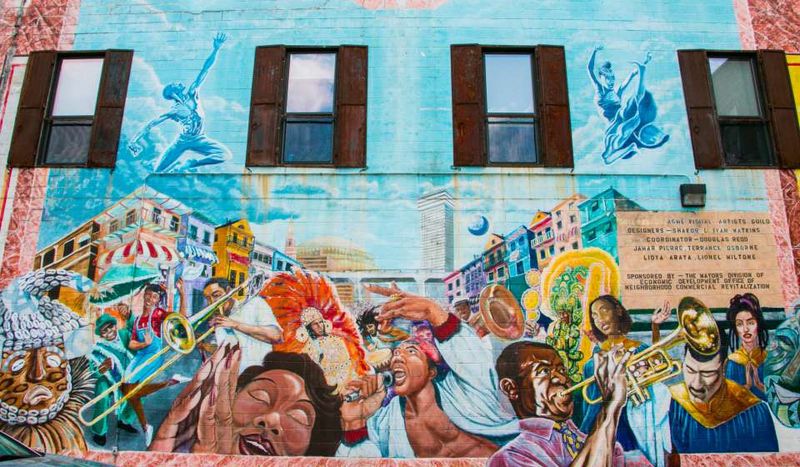
Music literally rises from the sidewalks in New Orleans, where artistic manhole covers feature jazz instruments and street musicians perform beside colorful murals celebrating the city’s musical heritage. This city treats its streets as stages for both performing and visual arts.
The St. Claude Arts District showcases massive murals depicting local musicians and cultural icons. What makes New Orleans special is how public art captures the city’s unique spirit – second-line parades, Mardi Gras traditions, and jazz history appear in sculptures and paintings throughout neighborhoods.
Even hurricane recovery became artistic – damaged buildings transformed into meaningful installations that memorialize the city’s resilience. My favorite discovery was the Music Box Village, where architectural sculptures double as musical instruments anyone can play.
New Orleans proves that the most powerful public art reflects a city’s soul, creating spaces where cultural traditions stay alive through creative expression.
